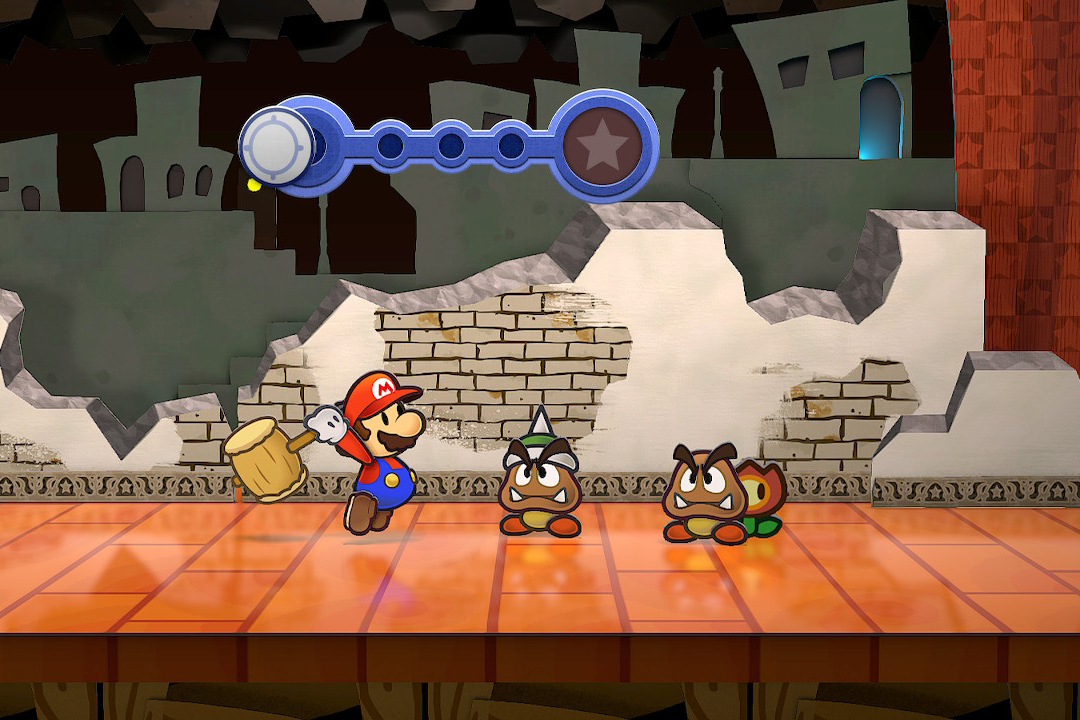Paper Mario: The Thousand Year Door review – Rogueport One
The cutout cult classic gets its long-awaited return

Stuff Verdict
A dark, delicious and hilarious RPG adventure worth playing. Paper Mario fans will love experiencing Thousand Year Door over again – and newcomers will be equally charmed.
Pros
- All the visual and character charm retained
- Fun and hilarious narrative
- Great cast of party members with different abilities
Cons
- Pacing issues remain
- Fewer quality-of-life additions compared to other remakes/remasters
Introduction
Is the title a reference to a mysterious door that needs to be opened in order to save the world, or how long it’s taken for this game to come to modern audiences?
Only ever released for the GameCube, Paper Mario: The Thousand Year Door has long been considered a cult favourite in the role-playing game spin-off series. I also remember it being pipped by insiders as bound for Nintendo Switch since before the console even launched, only for nothing to materialise year after year.
But it was only a matter of time, given that the original Paper Mario landed on the Nintendo Switch Online service via the Expansion Pack in 2021 while last year saw the remake of Super Mario RPG, which had kickstarted the plumber’s foray into the RPG genre. Being its 20th anniversary this year, it also just makes sense.
The question is, has the wait been worth it, or will those who have hesitated over forking out for its outrageous prices on the retro market wonder what all the fuss is about?
Paper cut


In contrast to Mario’s usual platforming adventures, Paper Mario sees the story takes centre stage. Aside from the vocal utterances (presumably reusing the original audio since Charles Martinet is still credited, despite having retired from the iconic role), he’s still your typical silent protagonist – but that just means the rest of the cast have plenty of great lines that poke fun at and subvert expectations.
Some traditions stick, though. Princess Peach gets kidnapped once again, and your mission to rescue her also involves finding seven Crystal Stars to open the titular Thousand Year Door. But it’s everything that happens within this seemingly rote plot that makes TTYD special. Just about every stock character from the Mushroom Kingdom has their own unique twist and personalities, especially the ones that join your rich and varied party roster. The brainy but gutsy student Goombella; the initially timid Koops; old washed-up sailor Admiral Bobbery; they’re not just well-written, but have their own unique abilities in exploration and battle.
Each area you visit is also vastly different from the next, and more than just travelling to a town and dungeon. Sure, you’ll first storm a castle and fight a dragon, but you’ll also be solving a mystery onboard a train, and finding yourself shipwrecked on a deserted island. Some fights have unexpected quirks, beyond the charming framing of these all taking place on a theatre stage. One encounter isn’t even a fight but a quiz show.
There’s a darker tone lurking beneath the surface, though. Never mind the fact the main hub of Rogueport has a gallows in the town square – it’s incredible how the original game got away with stretching innuendo to breaking point. Who imagined squeaky clean Nintendo would approve of scenes implying Peach has her kit off? That’s not even mentioning the design of Madame Flurrie, who joins you as a party member. Amazingly this has all been faithfully preserved, and with a PEGI-7 rating to boot.
Master craft


It may look like more of a straight port than 2023’s Super Mario RPG Remake, but that’s more a testament to the series’ timeless paper cutout aesthetic. The visuals have actually been brought a little more in line with 2020’s The Origami King, though it lacks the same tactile papercraft charm as more recent (if gimmicky) Paper Mario instalments.
You do get a bit of it through Mario’s unlockable abilities, such as fitting his flat self through narrow gaps, or folding into a paper plane to traverse the air. The more traditional turn-based battle gameplay, with an emphasis on well-timed button taps or holds for bonus damage, remains.
On the whole, there aren’t many quality-of-life improvements. Unlike the Super Mario RPG remake, there’s no easy mode option, so expect some grinding when you run into the occasional difficulty spike. A partner wheel at least makes it quicker to cycle through party members now, instead of repeatedly going into menu screens. Goombella also provides more useful hints if you’re stuck, even when she’s not your partner.
The script has seen a bit of an update, finally giving one of Mario’s party members the correct gender identity – something that had been erased in English-language versions of the original release. There’s also a new score arrangement, but the moment I unlocked the option to return to the original score, I did so – it still sounds terrific.
There and back again


For all of its weird and wonderful aspects, Paper Mario TTYD isn’t without its shortcomings – namely pacing. Working your way up to champion in the Glitz Pit or playing detective on the Excess Express are fun ideas, but tend to drag. The less said about one late-game wild goose chase, the better. It’s not nearly as egregious as more modern RPG examples, but at times it feels the writing and humour are doing a lot of the heavy lifting.
There are playful asides that follow the end of each chapter, one where a captive Peach strikes up an intriguing relationship with a super computer that’s fallen in love with her. Bowser (not the chief villain, as tends to be the case in this spin-off) is also playable through pastiches of 2D Mario levels. You can even chat to Luigi, who turns out to be having his very own epic adventure happening in parallel.
These still don’t quite make up for an awful lot of backtracking before you can continue the main quest. There’s also a whole laundry list of side quests you can take on at the Trouble Centre, though I soon also found it rather tedious and focused on the main story instead.
Some abilities do alleviate some of the backtracking, and fast travel is worth the initial faff it takes to set up. But some newer ways to speed up or smooth these moments would have really helped.
Paper Mario: The Thousand Year Door verdict


20 years later, it’s great to finally be able to play TTYD on a modern platform. But while its visuals and RPG-lite gameplay remain timeless, there are a few trade-offs. The original GameCube version runs at 60 FPS, while this one is capped at 30 FPS – although it’s so consistent I suspect most people won’t notice. I also find the original score a much better fit compared to the new orchestral arrangement.
Nintendo and Intelligent Systems could’ve done more to tackle some of the more annoying backtracking moments, but this is still going to be the best way to experience a cult classic without getting ripped off at CEX or eBay. It’s taken its time, but I’ll call that a win.
Stuff Says…
A dark, delicious and hilarious RPG adventure worth playing.
Pros
All the visual and character charm retained
Fun and hilarious narrative
Great cast of party members with different abilities
Cons
Pacing issues remain
Fewer quality-of-life additions compared to other remakes/remasters



